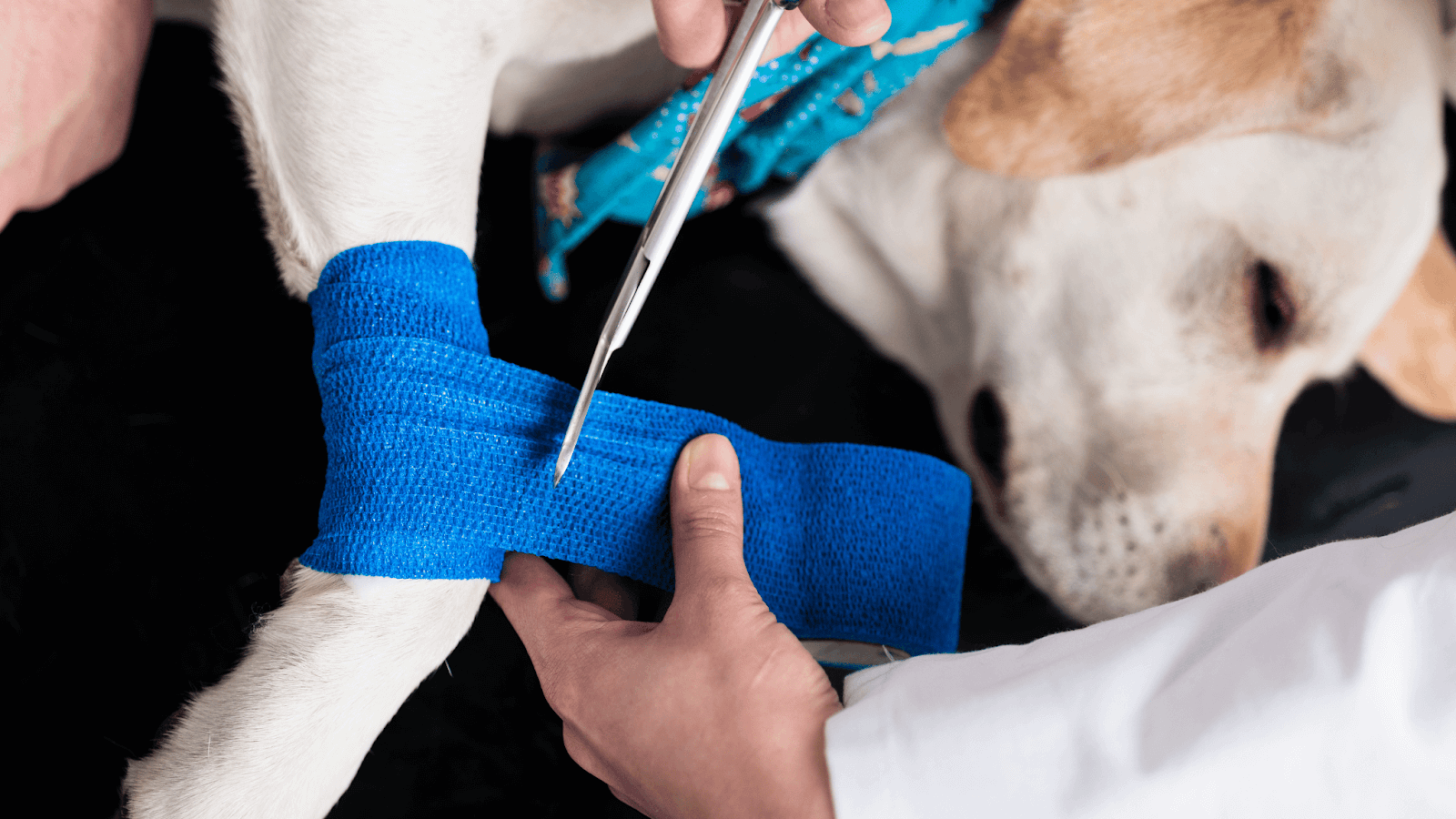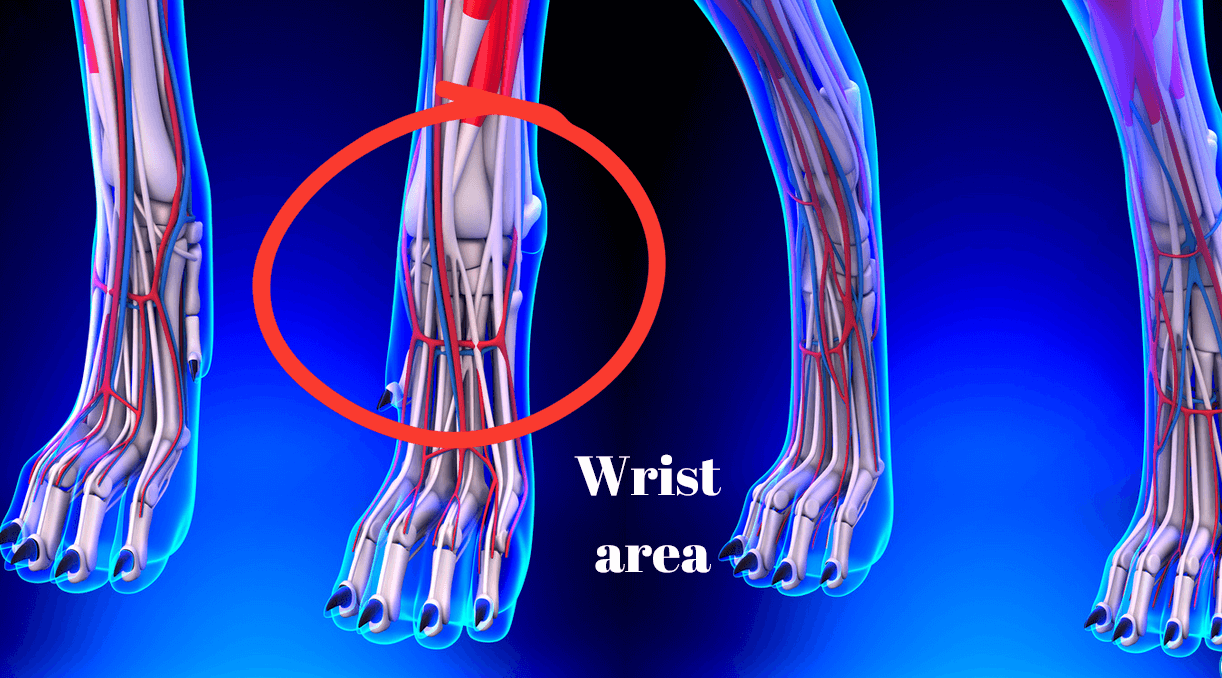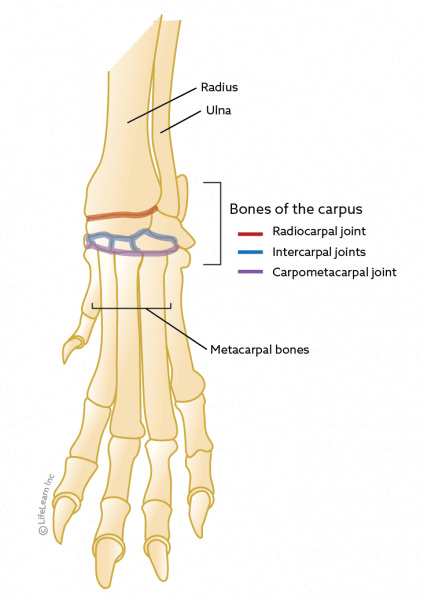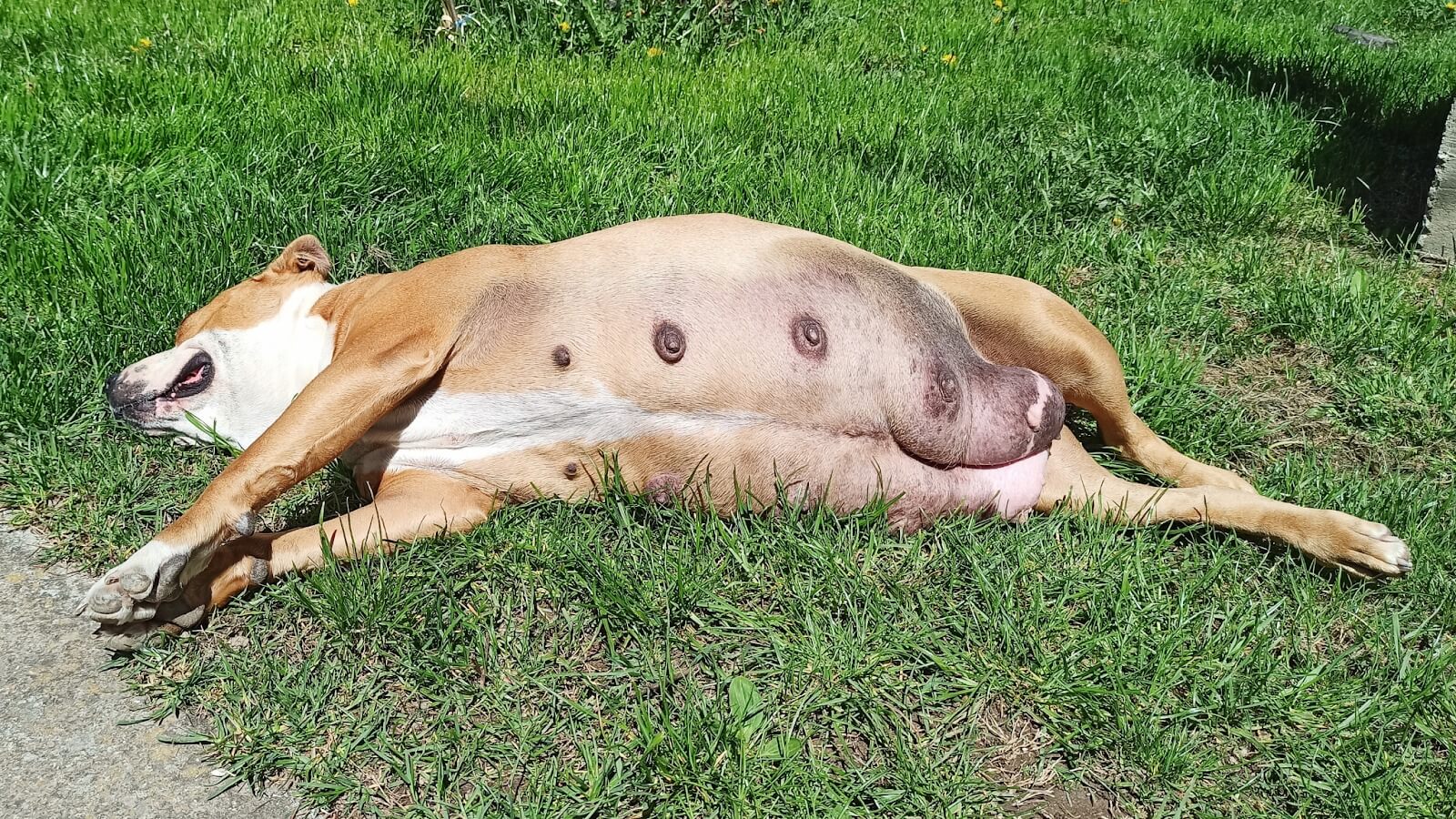Dogs are active animals that love to run, jump, and play, so dog sprained wrists are not uncommon. This type of injury is common among dogs, especially those active or participating in sports.
Sprained wrists mostly happen due to traumatic injuries, often during play. However, improper nail care can also cause overgrown nails and, consequently, sprained wrists. So, quality canine nail clippers are essential to your dog’s grooming arsenal.
If left untreated, a sprained wrist can lead to more severe problems, such as arthritis or chronic pain. Therefore, dog owners must recognize the signs of a sprained wrist and seek veterinary care as soon as possible. We’ve looked into Bone Trauma in Dogs and other expert sources for a complete dog sprained wrist manual.
So, How Do I Know If My Dog Has A Sprained Wrist?
If you suspect your dog has a sprained wrist, it is essential to look for signs like limping or holding the affected limb up. Other signs include swelling or bruising around the wrist area, pain or discomfort when touched, and reluctance to use the affected limb, or difficulty walking. It’s important to consult the vet for diagnosis.
Sprained wrist signs closely resemble those of a broken paw, which you can read in our linked article. Other times, dogs can limp or have partial lameness due to thorns and other foreign objects.
Others even deliver an Oscar-winning performance by faking paw or wrist injuries for attention. This is why it’s essential to consult your vet if you see any limping signs since various conditions can cause the same symptoms.
During the veterinary examination, the veterinarian will assess the range of motion, stability, and pain response of the affected limb. They may also perform diagnostic imaging such as X-rays or ultrasounds to further evaluate the injury.
The veterinarian may recommend rest, pain management, and physical therapy if your dog is diagnosed with a sprained wrist. In some cases, surgical intervention may be necessary. Following the veterinarian’s instructions for care and rehabilitation is essential to ensure a full recovery for your furry friend.
You may also like:
Understanding Dog’s Wrist Anatomy
A dog’s wrist is sometimes called the carpus, but the latter better refers to a group of bones. The wrist is a complex joint that connects the lower part of the forelimb to the paw. It comprises several bones, ligaments, tendons, and muscles that work together to provide stability, flexibility, and support to the limb.
When a dog sprains its wrist, the ligaments that hold these bones together have been stretched or torn. This can cause pain and discomfort and may even affect the dog’s ability to walk or run properly.
The wrist region is made up of eight small bones called carpal bones that are arranged in two rows. The first row is located closest to the paw, while the second row is located closer to the forearm.
The tendons that control the movement of the paw and fingers attach to the carpal bones and pass through the wrist joint. These tendons are responsible for flexing and extending the paw and fingers, allowing the dog to walk, run, jump, and perform other activities.
In addition, the muscles that control the movement of the wrist and paw are located in the forearm and attach to the carpal bones through tendons. These muscles work together to provide the necessary strength and support to the wrist joint.
Some claim that dogs have wrists on both hind and front limbs. However, most experts and ourselves hold that the wrists are part of the front limb anatomy, and the joints in the hind legs are the ankles (hocks). You can read our article on do dogs have arms or legs for more.
Understanding the anatomy of a dog’s wrist is essential in diagnosing and treating injuries such as sprains, fractures, and dislocations. It also helps prevent such injuries by identifying the risk factors and taking appropriate precautions.
Identifying a Sprained Wrist in Dogs
Physical Signs
When a dog suffers from a sprained wrist, there are a few physical signs that can help identify the condition:
- Limping or favoring one leg over the other;
- Difficulty putting weight on the affected leg;
- In some cases, the dog may hold the affected leg up off the ground entirely;
- Swelling;
- Bruising or discoloration; and
- The dog may also be sensitive to touch in the affected area.
Behavioral Changes
In addition to physical signs, there may also be some behavioral changes that can help identify a sprained wrist in dogs.
- The dog may be more reluctant to engage in physical activity or play;
- They may also be less willing to jump or climb stairs;
- The dog may also exhibit pain or discomfort, such as whimpering or yelping, when the affected leg is touched or moved;
- They may also lick or bite at the affected area to relieve the discomfort;
- Changes in sleep patterns; and
- Agitation or aggression.
Again, these signs can also indicate other conditions, so it is important to consult with a veterinarian for a proper diagnosis.
Causes of Sprained Wrist in Dogs
A sprained wrist in dogs typically results from a sudden twisting or bending of the joint beyond its normal range of motion. This can happen when a dog jumps, runs, or falls awkwardly. The sprain can occur in any ligaments that connect the bones in the wrist.
Certain factors can increase a dog’s risk of spraining its wrist, including:
- Age: Older dogs are more prone to sprains due to weaker ligaments and joints
- Breed: some breeds may be more prone to wrist sprains than others. Breeds with short legs and long backs, such as Dachshunds and Corgis, may be at higher risk due to their unique body structure. Additionally, large breeds, such as Great Danes and Mastiffs, may be more prone to sprains due to their size and weight.
- Obesity: Overweight dogs put more strain on their joints, increasing the risk of injury
- Intense activity: Dogs that engage in high-impact activities, such as agility training or hunting, are more likely to sprain their wrists.
- Poor conditioning: Dogs not in good physical condition are more prone to injury.
- Poor Footing: Slipping on slick surfaces or tripping on uneven terrain can lead to sudden twisting or hyperextension of the carpal joint, resulting in injury.
- Degenerative Conditions: Some dogs may have underlying degenerative joint conditions, such as osteoarthritis, that weaken the carpal joint, making it more susceptible to sprains.
Diagnosis of Dog Sprained Wrist
Diagnosis of a dog’s sprained wrist requires a thorough examination by a veterinarian. The veterinarian will assess the dog’s gait, range of motion, and response to palpation. They may also perform X-rays or other imaging tests to rule out any fractures or other injuries.
The veterinarian will look for signs of swelling, pain, heat, and inflammation during the examination. They may also check for any abnormalities in the joint, such as instability or a clicking sound.
If the veterinarian suspects a sprained wrist, they may perform a stress test to determine the extent of the injury. This involves applying pressure to the joint in different directions to assess its stability.
It is important to seek veterinary care as soon as possible if a dog is suspected of having a sprained wrist. Delaying treatment can lead to further damage and prolong the recovery time.
You can also see this video for more information on how to do a home examination when your dog is lame:
Treatment Options for Sprained Wrist in Dogs
When a dog has a sprained wrist, it is important to seek treatment to reduce pain and prevent further damage. Various treatment options are available for dogs with sprained wrists, including home care and veterinary interventions.
Home Care
Home care for a sprained wrist in dogs involves rest and limited activity to prevent further injury. It is important to limit the dog’s movement and keep them from jumping or running excessively.
Additionally, using a brace or splint may help immobilize the wrist and promote healing. Cold compresses can also be applied to the affected area to reduce swelling and inflammation.
Veterinary Interventions
Veterinary interventions may be necessary if the sprain is severe or does not improve with home care. The veterinarian may prescribe pain medication or anti-inflammatory drugs to reduce pain and swelling.
Physical therapy and rehabilitation exercises may also help to improve the dog’s mobility and strength. Surgery may sometimes be necessary to repair a severe wrist sprain. This may involve using pins, screws, or other hardware to stabilize the joint and promote healing.
Following the veterinarian’s instructions carefully and attending all follow-up appointments is essential to ensure the dog’s wrist heals appropriately. With proper treatment and care, most dogs with sprained wrists can recover and return to their normal activities.
Prevention of Sprained Wrist in Dogs
Proper Exercise
However, it is vital to ensure that exercise is appropriate for the dog’s age, breed, and fitness level. Overexertion or sudden changes in activity can increase the risk of injury.
Proper Nutrition
Owners should ensure their dog’s diet includes appropriate amounts of protein, fat, and carbohydrates, as well as essential vitamins and minerals.
Proper Training
Proper Footwear
By following these steps, owners can help reduce the risk of their dog experiencing a sprained wrist. However, accidents can still happen, and owners should always be aware of their dog’s movements and behavior to detect any signs of injury.
Recovery and Rehabilitation
Physical Therapy
Physical therapy is an essential part of the recovery process for a dog with a sprained wrist. A licensed veterinarian will work with the dog to develop a rehabilitation plan tailored to their specific needs.
Physical therapy aims to improve the dog’s mobility, strength, and flexibility. The therapy may include range-of-motion exercises, massage, and hydrotherapy.
Range-of-motion exercises help to increase the dog’s flexibility and range of motion in the affected wrist. These exercises may include gently moving the wrist joint in different directions or stretching the muscles surrounding the wrist.
Massage can help to relieve pain and reduce swelling in the affected area. Hydrotherapy, which involves exercising in water, can help to reduce weight-bearing on the affected wrist while still providing a good workout.
Post-Treatment Care
Rest is the most essential part of sprained wrist recovery in dogs. This allows the torn or stretched ligaments and muscles to return to normal.
After physical therapy, it is vital to continue to care for the dog’s wrist to prevent re-injury. The veterinarian may recommend a brace or splint to help support the wrist during the healing process. Following the veterinarian’s instructions regarding using the brace or splint is essential, as improper use can cause further damage.
In addition to the brace or splint, the dog may need to rest and avoid high-impact activities for some time. The veterinarian may also recommend a specific diet or supplements to help support the dog’s joint health.
Regular check-ups with the veterinarian can help to monitor the dog’s progress and ensure that they are healing properly.
Other Wrist Issues that Aren’t Sprains
- Carpal Fractures: Fractures of the bones in the carpal area can occur due to trauma or accidents
- Carpal Hyperextension: Carpal hyperextension occurs when the carpal joint is bent backward beyond its normal range of motion. It can result from trauma, repetitive stress, or underlying joint instability.
- Carpal Hyperflexion: This condition involves excessive bending of the carpal joint in the forward direction, usually due to ligament laxity or trauma.
- Carpal Luxation: Carpal luxation occurs when the bones in the carpal joint become dislocated. It can be congenital (present from birth) or due to injury.
- Carpal Tendonitis: Tendonitis is inflammation of the tendons surrounding the carpal joint. It can be caused by repetitive motion or injury.
Frequently Asked Questions (FAQs)
What is the typical recovery time for a dog with a sprained wrist?
How can I support my dog’s wrist after a sprain?
What are the symptoms of a sprained wrist in a dog?
Are wrist wraps or braces effective in treating a dog’s sprained wrist?
What is the best way to treat a dog’s sprained wrist at home?
Can a dog’s sprained wrist heal on its own, or is veterinary care necessary?
Conclusion
A sprained wrist can be a painful and uncomfortable experience for dogs. It is important to take proper care of your dog’s injury to ensure a speedy recovery. The first step in treating a sprained wrist is to visit a veterinarian for a proper diagnosis. They can provide you with a treatment plan, including rest, medication, or physical therapy.











